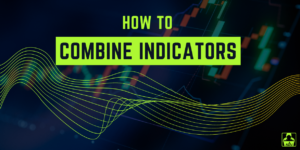Introduction to Leveraging and Liquidations
Leveraging is a common practice in cryptocurrency trading that allows traders to increase their exposure to a particular asset by borrowing funds from a broker. This enables traders to control larger positions than their available capital would allow. However, leveraging also comes with increased risk, as any losses incurred are magnified.
One of the main risks associated with leveraging is liquidation. Liquidation occurs when a trader’s position falls below a certain threshold, known as the liquidation price. At this point, the broker will automatically close the position to prevent further losses. Liquidation can result in significant losses for traders who have over-leveraged their positions.
To minimize the risks associated with leveraging, it is important for traders to manage their risk effectively. This involves setting stop-loss orders and carefully monitoring the market to ensure that positions do not fall below the liquidation price.
Understanding Margin Calls and the Liquidation Process
Margin calls are notifications from brokers to traders requiring them to deposit additional funds to cover potential losses. If a trader does not meet the margin call, the position may be liquidated. This process helps to protect brokers and ensure that traders are not exposed to excessive losses.
The liquidation process typically involves the broker closing the position and selling the underlying asset to cover the losses incurred. The proceeds from the sale are used to pay off the amount owed by the trader. However, if the sale of the asset does not cover the full amount owed, the trader may be responsible for paying the difference.
The Impact of Market Sentiment on Liquidations and Price Movements
Market sentiment can have a significant impact on liquidations and price movements in cryptocurrency trading. If market sentiment is negative, traders may be more likely to sell their positions, increasing selling pressure and potentially triggering liquidations.
Conversely, if market sentiment is positive, traders may be more likely to buy, increasing buying pressure and potentially pushing prices higher. It is important for traders to monitor market sentiment and adjust their positions accordingly to minimize the risks of liquidation.
Overview of Cumulative Volume Delta (CVD) and How it Works
Cumulative volume delta (CVD) is a technical indicator that measures the difference between the buying and selling volume of an asset. It is used to identify whether there is more buying or selling pressure in the market and can be used to predict potential price movements.
CVD is calculated by taking the difference between the cumulative buying volume and the cumulative selling volume. A positive CVD indicates that there is more buying pressure, while a negative CVD indicates that there is more selling pressure.
Using CVD to Understand Market Trends and Identify Potential Reversals
CVD can be used to understand market trends and identify potential reversals. If CVD is positive and increasing, it indicates that there is more buying pressure in the market, potentially leading to higher prices. Conversely, if CVD is negative and increasing, it indicates that there is more selling pressure in the market, potentially leading to lower prices.
Traders can also use CVD to identify potential reversals. If CVD is positive and decreasing, it may indicate that buying pressure is weakening, potentially leading to a reversal. Conversely, if CVD is negative and decreasing, it may indicate that selling pressure is weakening, potentially leading to a reversal.
Spot and Derivatives Markets in CVD Analysis and the Relationship Between the Two
Spot markets refer to the physical buying and selling of assets, while derivatives markets refer to trading in contracts that derive their value from an underlying asset. CVD analysis can be applied to both spot and derivatives markets.
In spot markets, CVD is calculated based on the actual buying and selling of the underlying asset. In derivatives markets, CVD is calculated based on the buying and selling of the contracts themselves.
The relationship between spot and derivatives markets in CVD analysis is complex. Changes in derivatives markets can impact spot markets, and vice versa. Traders should be aware of the relationship between the two and monitor both when using CVD analysis to make trading decisions.
Conclusion and Key Takeaways
Leveraging and liquidation are important concepts to understand in cryptocurrency trading. Traders should be aware of the risks associated with leveraging and manage their risk effectively to minimize the potential for liquidation.
CVD is a useful technical indicator that can be used to understand market trends and identify potential reversals. Traders should be aware of the relationship between spot and derivatives markets in CVD analysis and monitor both when making trading decisions.
Overall, effective risk management and the use of technical indicators like CVD can help traders make more informed and profitable trading decisions in the cryptocurrency market.










